🍈 The History of Honeydew-Flavored Candy 🍈
Craving something sweet? Jump to a list of my favorite melon-flavored candies!
Among the myriad of candy flavors, the delicate and refreshing taste of honeydew melon stands out. The history of honeydew melon-flavored candy is a captivating journey through time, filled with culinary innovation, cultural influences, and the enduring appeal of this beloved melon variety. Let's embark on a 1000-year exploration to uncover the intriguing history of honeydew melon-flavored candy, from its ancient origins to its modern-day popularity. Here we go!
🍈 Ancient Origins: The Melodic Melon 🍈
The story of honeydew melon-flavored candy begins with the ancient cultivation and appreciation of this sweet and fragrant melon. Honeydew melons, believed to have originated in Africa or Asia, have a long history dating back thousands of years. These luscious melons were prized for their juicy, aromatic flesh and became a cherished fruit in various cultures.
In ancient civilizations, honeydew melons were often enjoyed fresh, offering a sweet and refreshing treat. However, the preservation and enhancement of the honeydew melon's flavor in confections did not occur until much later in history.
🍈 The Renaissance: A Culinary Revival 🍈
The Renaissance period in Europe marked a significant turning point in the history of honeydew melon-flavored candy. This era was characterized by a resurgence of interest in culinary arts and the exchange of knowledge between different regions of the world.
As trade routes expanded and explorers brought new fruits to Europe, the availability of exotic flavors like honeydew melon began to influence the world of confectionery. The unique taste and aroma of honeydew melon intrigued confectioners, leading to experiments with creating honeydew melon-flavored confections. However, it's important to note that early honeydew melon candies were made using natural honeydew melon extracts and essences.
One notable development during this period was the creation of honeydew melon-flavored hard candies. These candies were crafted by boiling sugar, honeydew melon essence or extract, and sometimes a hint of citric acid to create a flavorful syrup. The syrup was then shaped into hard candies, encapsulating the sweet and refreshing essence of honeydew melon in a convenient, portable form.
🍈 The 19th Century: Sugarcraft Advancements 🍈
The 19th century witnessed significant advancements in sugar production and candy-making techniques. As sugar became more readily available and affordable, confectioners gained greater control over the flavors and textures of their sweets.
Honeydew melon-flavored hard candies continued to gain popularity during this period. Confectioners refined their techniques and experimented with various formulations to capture the quintessential taste of ripe honeydew melons. These hard candies became a beloved summer treat, enjoyed for their nostalgic taste of the fruit.
🍈 The Mid-20th Century: Honeydew's Candy Revival 🍈
The mid-20th century saw the revival of honeydew melon-flavored candy to new heights. This era was marked by post-World War II economic prosperity and a growing interest in unique and nostalgic flavors.
One iconic honeydew melon-flavored candy that emerged during this time was the Honeydew Jolly Rancher. Jolly Rancher, a brand known for its hard candies and bold fruit flavors, introduced the honeydew melon flavor to its lineup. The Honeydew Jolly Rancher quickly gained popularity for its authentic honeydew sweetness and became a staple in candy shops and supermarkets.
Another significant development during this period was the creation of honeydew melon-flavored gummies. Honeydew melon gummies, with their pale green color and delicate taste, became a favorite among children and adults alike. The chewy, bite-sized morsels offered a fun and flavorful experience that captured the essence of biting into a ripe honeydew melon slice.
🍈 Modern-Day Honeydew Melon Candy 🍈
In the contemporary candy landscape, honeydew melon-flavored candy remains a cherished classic. Its versatility is evident in the wide range of honeydew melon-flavored confections available today, from gummies and licorice to gum and flavored popcorn.
One notable trend in modern honeydew melon-flavored candy is the fusion of honeydew melon with other complementary flavors to create innovative taste combinations. For example, honeydew melon and mint blends offer a refreshing and invigorating flavor profile, reminiscent of a cool summer drink.
🍈 The Role of Honeydew Melon Candy in Popular Culture 🍈
Honeydew melon-flavored candy, with its delicate flavor and pale green hue, has played a significant role in popular culture. Its light and refreshing qualities evoke a sense of relaxation and summer bliss. Honeydew melon candies often appear in literature, film, and television as symbols of leisure and indulgence.
One notable example is the use of honeydew melon candy in summer-themed literature and movies to represent tranquil days and relaxation. The pale green color and the subtle sweetness create a sense of calm and refreshment that resonates with audiences seeking a break from the hustle and bustle of everyday life.
Honeydew melon-flavored candies are also featured in cultural celebrations and traditions. They are often incorporated into summer-themed candies, adding a touch of coolness and freshness to the festivities. Honeydew candies are also enjoyed during picnics and outdoor events, symbolizing the pleasures of outdoor leisure.
The history of honeydew melon-flavored candy is a delightful journey through time, reflecting the evolution of taste preferences, culinary innovation, and cultural influences. From its ancient beginnings as a natural fruit to its modern-day presence in a variety of confections, honeydew melon-flavored candy has captured the hearts and palates of generations. Its delicate and refreshing allure, pale green color, and versatility make it a beloved choice in the world of candy. As we savor a piece of honeydew melon-flavored candy, we can appreciate the rich history and cultural significance that have made this iconic flavor a timeless favorite—a symbol of summer, relaxation, and the simple joys of life.
🚨 But Wait! What About All the Other Melons? 🚨
More articles are coming soon! For now, let's explore cantaloupe-flavored candy.
🟠 The History of Cantaloupe-Flavored Candy 🟠
There are tons of melon flavors beyond watermelon and honeydew! Let's explore history of cantaloupe-flavored candy, from its ancient beginnings to its modern-day popularity.
🟠 The Ancient Origins of Cantaloupe 🟠
The story of cantaloupe-flavored candy begins with the ancient cultivation and appreciation of this sweet and fragrant melon. Cantaloupes, believed to have originated in Asia or Africa, have a long history dating back thousands of years. These succulent melons were prized for their juicy, aromatic flesh and became a cherished fruit in various cultures.
In ancient civilizations, cantaloupes were often enjoyed fresh, offering a sweet and refreshing treat. However, it was only in more recent history that the flavor of cantaloupe began to inspire confectioners to create cantaloupe-flavored delights.
🟠 The Renaissance: A Culinary Renaissance 🟠
The Renaissance period in Europe marked a significant turning point in the history of cantaloupe-flavored candy. This era was characterized by a resurgence of interest in culinary arts and the exchange of knowledge between different regions of the world.
As explorers and trade routes expanded, exotic fruits like cantaloupe found their way to Europe. The unique taste and aroma of cantaloupe intrigued confectioners, leading to experiments with creating cantaloupe-flavored confections. However, it's important to note that early cantaloupe candies were made using natural cantaloupe extracts and essences.
One notable development during this period was the creation of cantaloupe-flavored hard candies. These candies were crafted by boiling sugar, cantaloupe essence or extract, and sometimes a hint of citric acid to create a flavorful syrup. The syrup was then shaped into hard candies, encapsulating the sweet and refreshing essence of cantaloupe in a convenient, portable form.
🟠 The 19th Century: Sugarcraft Advancements 🟠
The 19th century witnessed significant advancements in sugar production and candy-making techniques. As sugar became more readily available and affordable, confectioners gained greater control over the flavors and textures of their sweets.
Cantaloupe-flavored hard candies continued to gain popularity during this period. Confectioners refined their techniques and experimented with various formulations to capture the quintessential taste of ripe cantaloupes. These hard candies became a beloved summer treat, enjoyed for their nostalgic taste of the fruit.
🟠 The Mid-20th Century: Cantaloupe's Candy Resurgence 🟠
The mid-20th century witnessed the resurgence of cantaloupe-flavored candy as a significant player in the confectionery industry. This era was marked by post-World War II economic prosperity and a growing interest in unique and nostalgic flavors.
One iconic cantaloupe-flavored candy that emerged during this time was the Cantaloupe Jolly Rancher. Jolly Rancher, a brand known for its hard candies and bold fruit flavors, introduced the cantaloupe flavor to its lineup. The Cantaloupe Jolly Rancher quickly gained popularity for its authentic cantaloupe sweetness and became a staple in candy shops and supermarkets.
Another significant development during this period was the creation of cantaloupe-flavored gummies. Cantaloupe gummies, with their vibrant orange color and juicy taste, became a favorite among children and adults alike. The chewy, bite-sized morsels offered a fun and flavorful experience that captured the essence of biting into a ripe cantaloupe slice.
🟠 Modern-Day Cantaloupe Candy 🟠
In the contemporary candy landscape, cantaloupe-flavored candy remains a cherished classic. Its versatility is evident in the wide range of cantaloupe-flavored confections available today, from gummies and licorice to gum and flavored popcorn.
One notable trend in modern cantaloupe-flavored candy is the fusion of cantaloupe with other complementary flavors to create innovative taste combinations. For example, cantaloupe and cucumber blends offer a refreshing and unique flavor profile, reminiscent of a spa-like experience.
🟠 The Role of Cantaloupe Candy in Popular Culture 🟠
Cantaloupe-flavored candy, with its vibrant orange color and distinctive taste, has played a significant role in popular culture. Its refreshing and unique qualities evoke a sense of nostalgia and adventure. Cantaloupe candies often appear in literature, film, and television as symbols of summertime and indulgence.
One notable example is the use of cantaloupe candy in summer-themed literature and movies to represent carefree days and joyous gatherings. The bright orange color and the sweet taste create a sense of warmth and nostalgia that resonates with audiences of all ages.
Cantaloupe-flavored candies are also featured in cultural celebrations and traditions. They are often incorporated into summer-themed candies, adding a touch of sunshine and freshness to the festivities. Cantaloupe candies are also enjoyed during picnics and outdoor events, symbolizing the pleasures of outdoor leisure.
The history of cantaloupe-flavored candy is a captivating journey through time, reflecting the evolution of taste preferences, culinary innovation, and cultural influences. From its ancient origins as a natural fruit to its modern-day presence in a variety of confections, cantaloupe-flavored candy has captured the hearts and palates of generations. Its sweet and refreshing allure, vibrant orange color, and versatility make it a beloved choice in the world of candy. As we savor a piece of cantaloupe-flavored candy, we can appreciate the rich history and cultural significance that have made this iconic flavor a timeless favorite—a symbol of summer, nostalgia, and the delicious delights of life.
🍈 Melon Candy Recommendations 🟠
Since there are relatively few specifically honeydew-flavored or cantaloupe-flavored candies, I've decided to combine cantaloupe and honeydew flavors under the umbrella of "melon" flavors. Both cantaloupe and honeydew are varieties of muskmelon, and many "melon"-flavored candies from Europe and Asia are marketed as "muskmelon"-flavored.
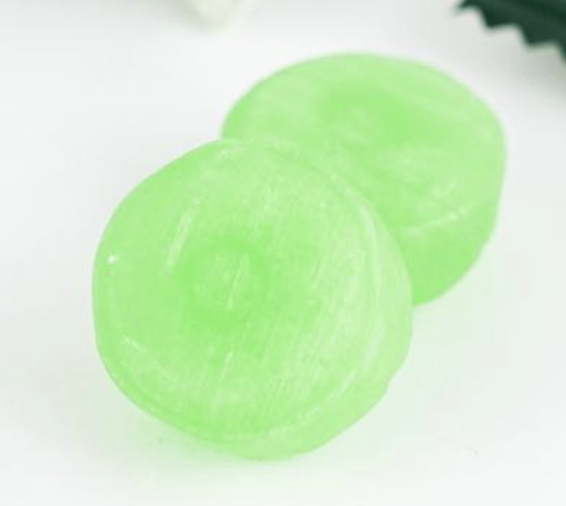
• Haitai/Haetae Melon Hard Candy (Amazon): I had never tried this brand before researching melon candy. This hard candy is certianly worth a try if you haven't had it yet!
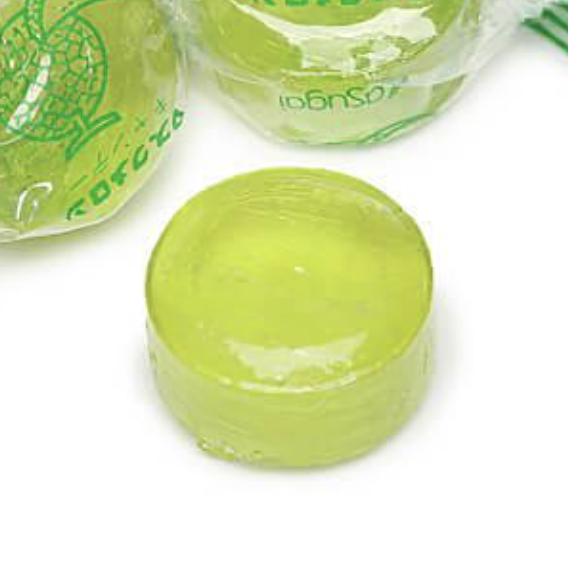
• Kasugai Muskmelon Candy (Amazon): Kasugai hits the nail on the head again!
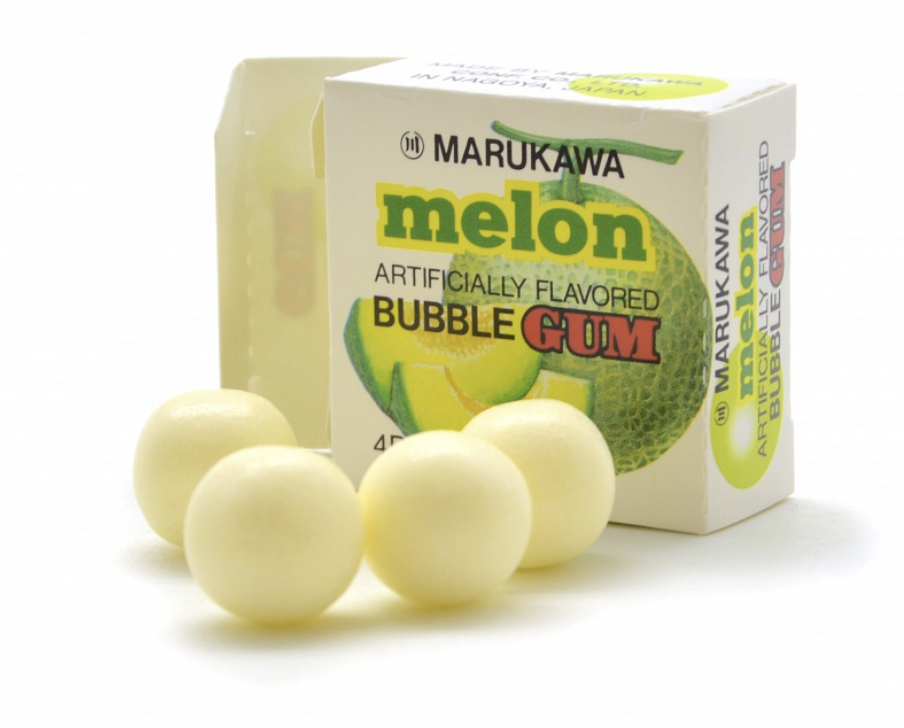
• Marukawa Bubble Gum Melon (Amazon): I love Marukawa gum! Perfect little tiny gumballs bursting with flavor. I wish the flavor lasted longer, but this gum has earned its a spot on my list nonetheless.
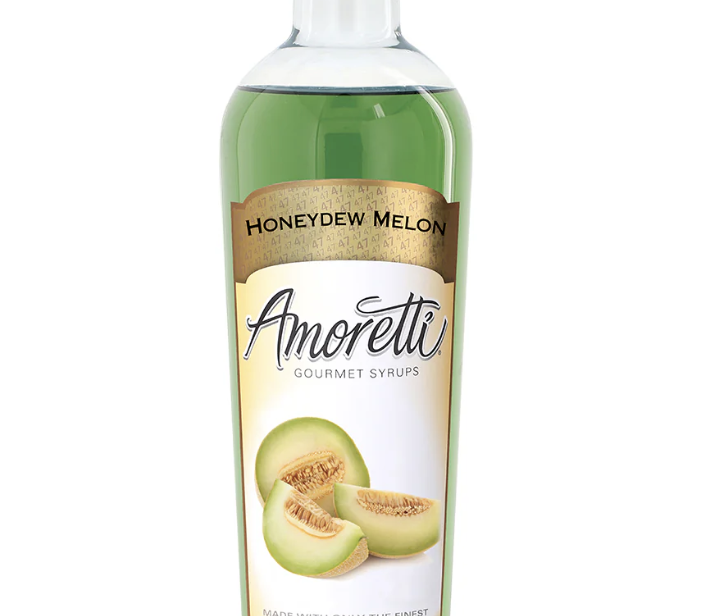
• Amoretti Honeydew Melon Syrup (Amazon): awesome syrup for flavoring everything from pastry fillings to boba tea!
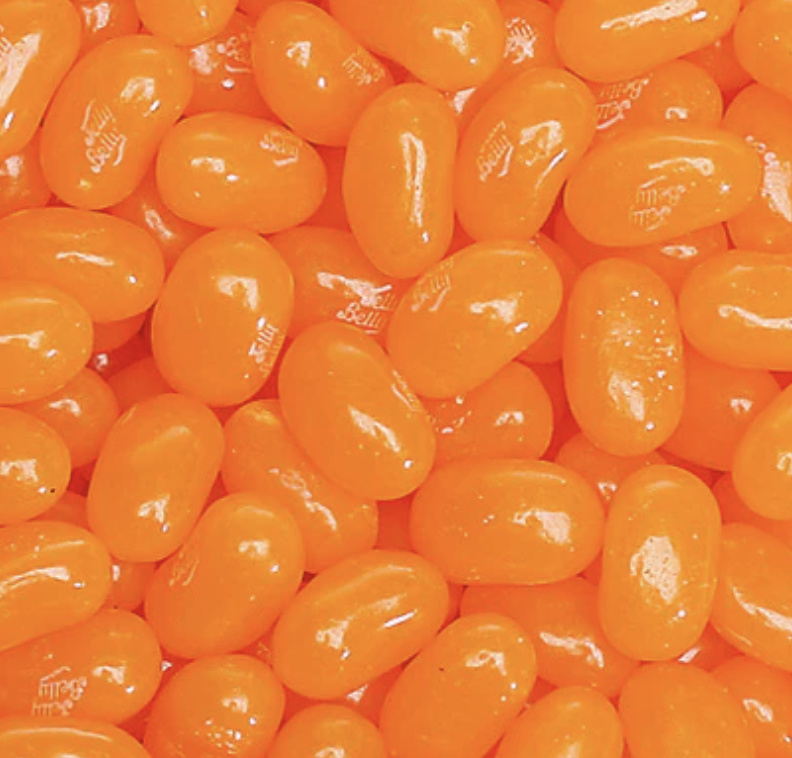
• Cantaloupe Jelly Belly Jelly Beans (Amazon): I wish Jelly Belly would produce honeydew-flavored jelly beans, because these jelly beans are a perfect recreation of ripe cantaloupe flavor.
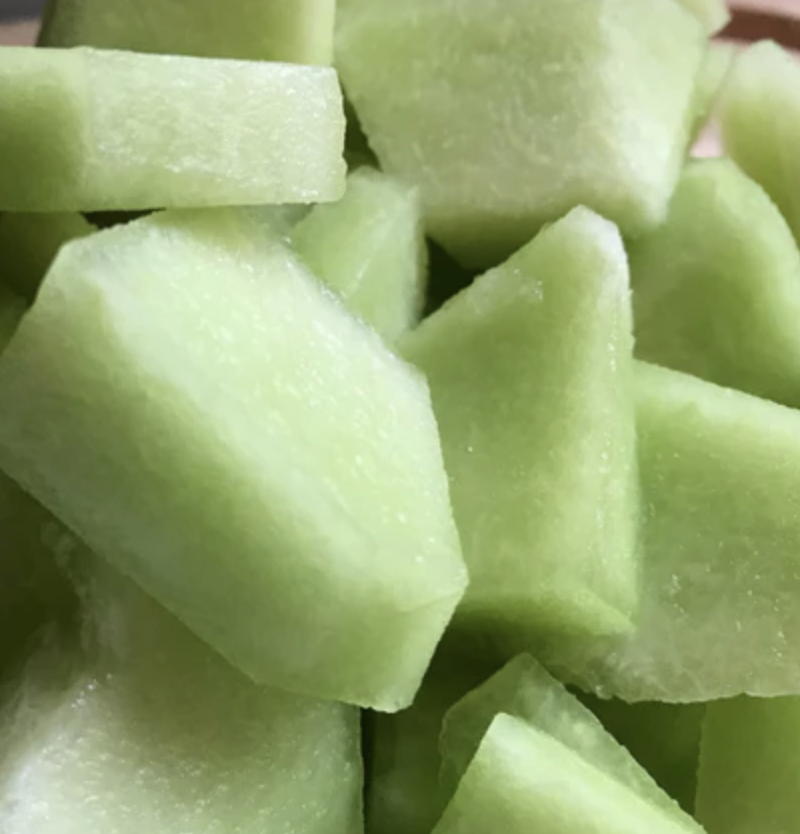
• Fresh Honeydew (Whole Foods): nature's candy! No wonder there are so few honeydew-flavored candies — actual honeydew is remarkably sweet when ripe. It's a perfect alternative to candy!
